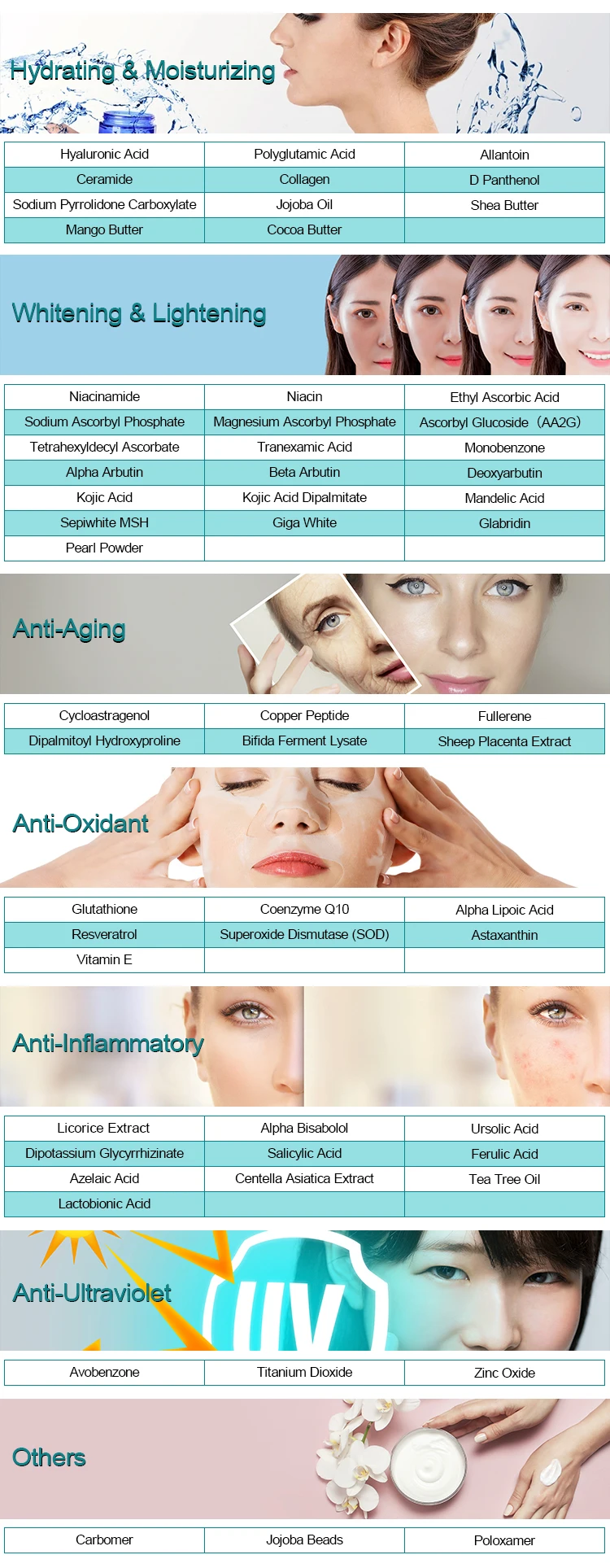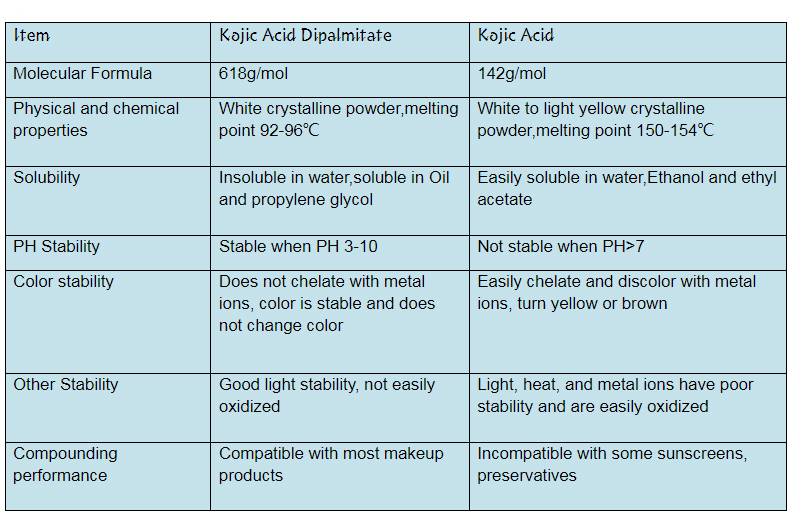Kojic acid dipalmitate is a modified form of kojic acid, which is a natural compound derived from certain fungi. Kojic acid is known for its skin-lightening properties and is often used in skincare products to reduce the appearance of dark spots, hyperpigmentation, and melasma.
Kojic acid dipalmitate is a more stable and lipophilic (fat-soluble) derivative of kojic acid. The addition of palmitic acid to kojic acid enhances its stability and skin penetration capabilities. This modified form is often preferred in cosmetic formulations because it is less prone to color changes and degradation caused by exposure to air and light.
The whitening effect of kojic acid dipalmitate is attributed to its ability to inhibit the activity of tyrosinase, an enzyme involved in the production of melanin, the pigment responsible for skin color. By inhibiting tyrosinase, kojic acid dipalmitate helps to reduce the synthesis of melanin, leading to a lighter skin tone and a reduction in the appearance of dark spots.
It’s important to note that while kojic acid dipalmitate is considered effective in skin-lightening formulations, individual responses may vary. Additionally, prolonged or excessive use of skin-lightening products may have side effects, so it’s advisable to use such products in moderation and under the guidance of a dermatologist. Always perform a patch test before using new skincare products to ensure compatibility with your skin.

Difference between Kojic Acid Dipalmitate and Kojic Acid
Kojic acid and Kojic Acid Dipalmitate are related compounds, both derived from a fungus called Aspergillus oryzae. They are known for their skin-lightening properties and are commonly used in cosmetic and skincare products. However, there are some differences between the two:
1.Chemical Structure:
Kojic Acid (KA): This is the original form of kojic acid. Its chemical structure consists of a single molecule of kojic acid.
Kojic Acid Dipalmitate (KAD): It is a modified form of kojic acid in which two palmitic acid molecules are attached to the kojic acid molecule.
2.Solubility:
Kojic Acid (KA): It is more soluble in water.
Kojic Acid Dipalmitate (KAD): It is lipid-soluble, meaning it dissolves better in oil-based formulations.
3.Stability:
Kojic Acid (KA): It can be unstable in some formulations, especially when exposed to air and light, which may cause it to oxidize and lose its effectiveness over time.
Kojic Acid Dipalmitate (KAD): It is often considered more stable than kojic acid and is less prone to oxidation, making it suitable for use in various cosmetic formulations.
4.Skin Penetration:
Kojic Acid (KA): Its penetration into the skin is relatively easier due to its water-soluble nature.
Kojic Acid Dipalmitate (KAD): Being lipid-soluble, it may have better skin penetration in oil-based formulations.
5.Skin Irritation:
Kojic Acid (KA): It has been associated with potential skin irritation for some individuals, particularly those with sensitive skin.
Kojic Acid Dipalmitate (KAD): Some formulations with KAD may be considered less irritating compared to kojic acid.

6.Lightening Effect:
Both compounds are used for skin lightening, but some studies suggest that Kojic Acid Dipalmitate may have a more stable and prolonged lightening effect compared to kojic acid.
It’s essential to note that individual skin types and sensitivities vary, and what works well for one person may not for another. Before using any skincare product containing these ingredients, it’s advisable to perform a patch test and consult with a dermatologist if you have concerns about potential skin reactions. Additionally, the safety and efficacy of cosmetic ingredients may evolve, so it’s a good idea to check for the latest research and product recommendations.
